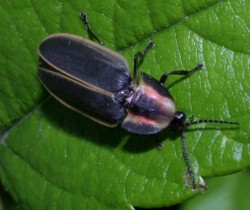
Tracking the Wild Horseshoe Crabs of New York
On June 1, 2011 at 11:51 PM, a group of people assembled on the beach in Northpoint, New York. There was no moon shining that night, not even a sliver. The people carried flashlights or wore headlamps. They held clipboards and paper. Their mission: to report where horseshoe crabs were spotted along the beach. This was just one of several places along New York’s shoreline where people collect data about horseshoe crabs. Volunteers also amassed on dark beaches in Stony Brook, Staten Island, Brooklyn and Westhampton. In all, volunteers monitored the comings and goings of horseshoe crabs at ten New York beaches that night. They are a part of the New York Horseshoe Crab Monitoring Network, a group of citizen scientists who are documenting where horseshoe crabs emerge from the water to lay eggs along beaches in New York State. On specific dates through the spring and early summer, participants collect data about the number of horseshoe crabs and identify their size and sex. They attach tags to the horseshoe crabs bulky exoskeleton and look for tags from prior years. … Read more
Categories: Animals, Biology, Citizen Science, Ecology & Environment, Ocean & Water









